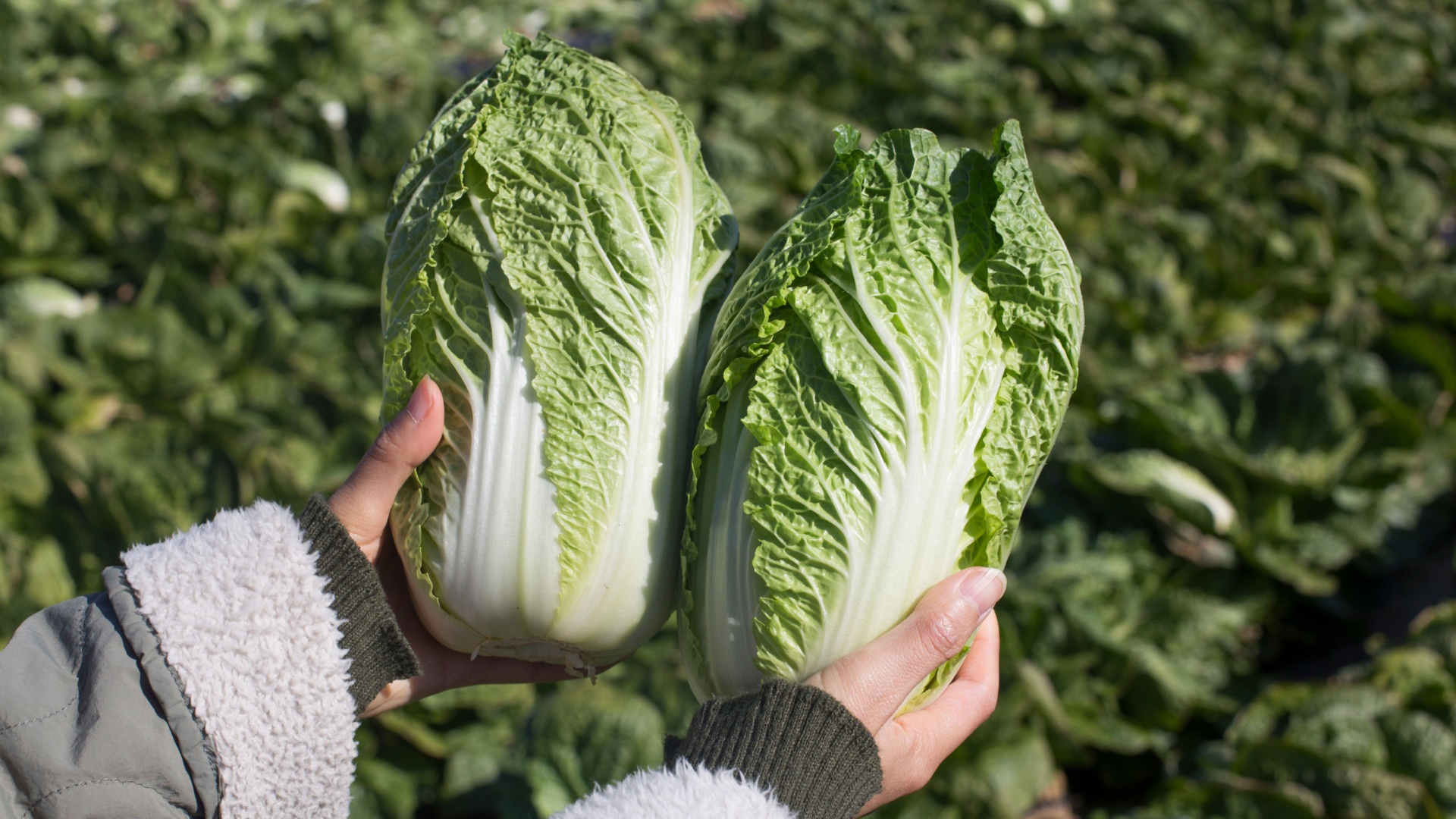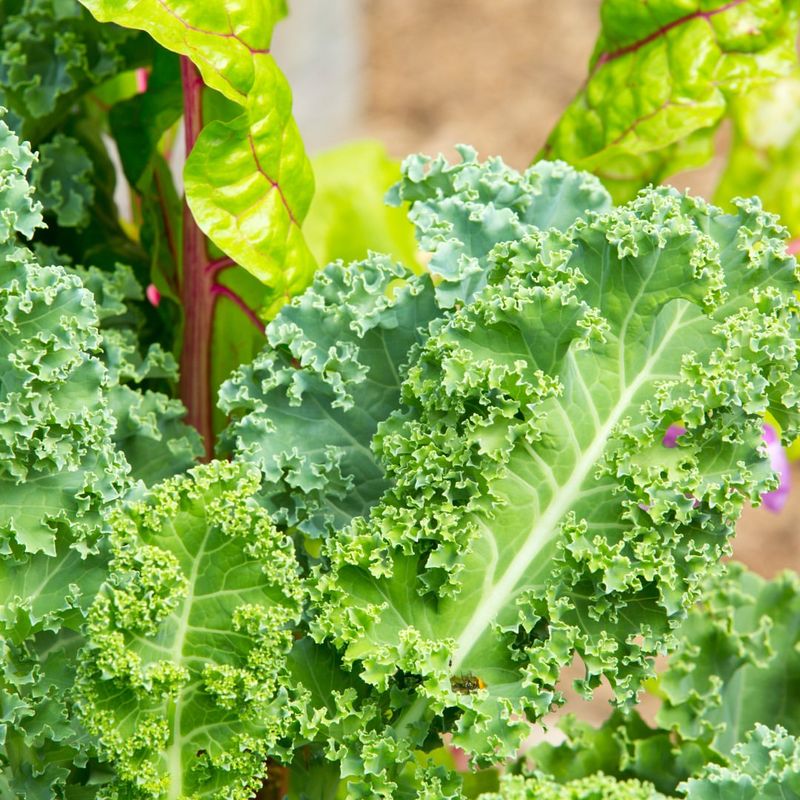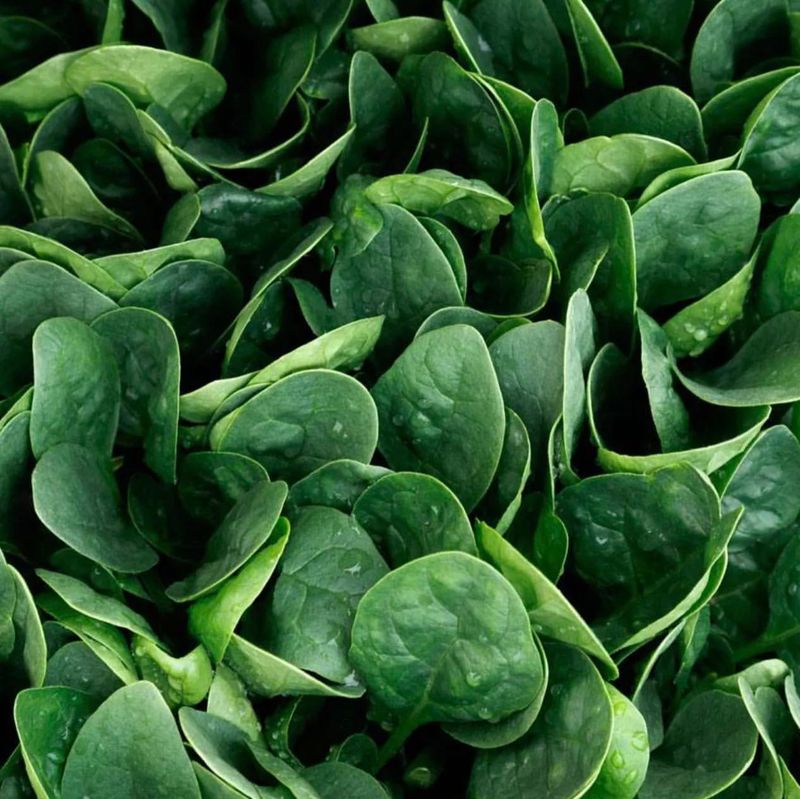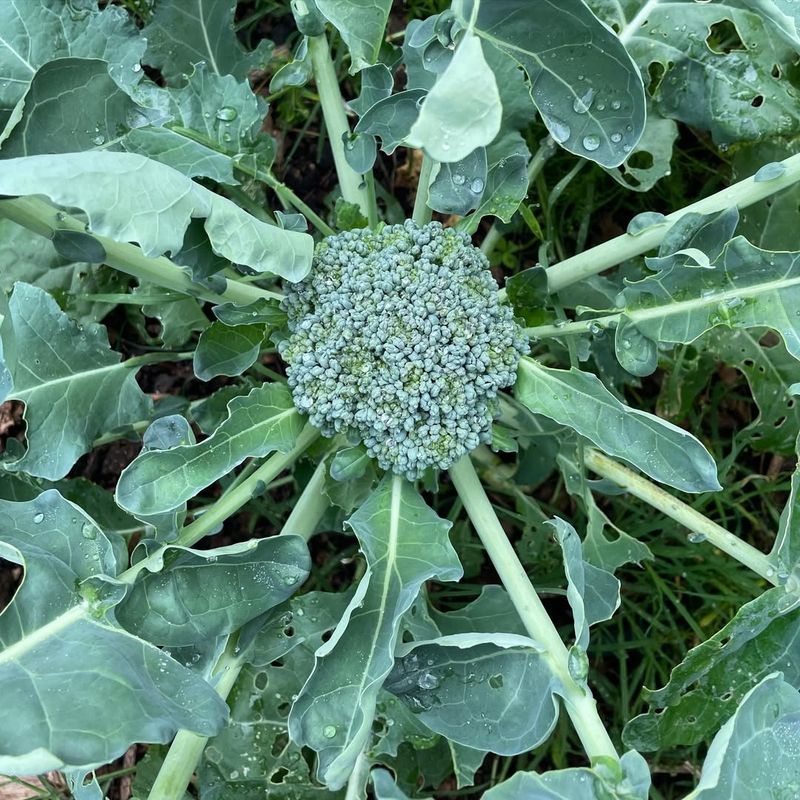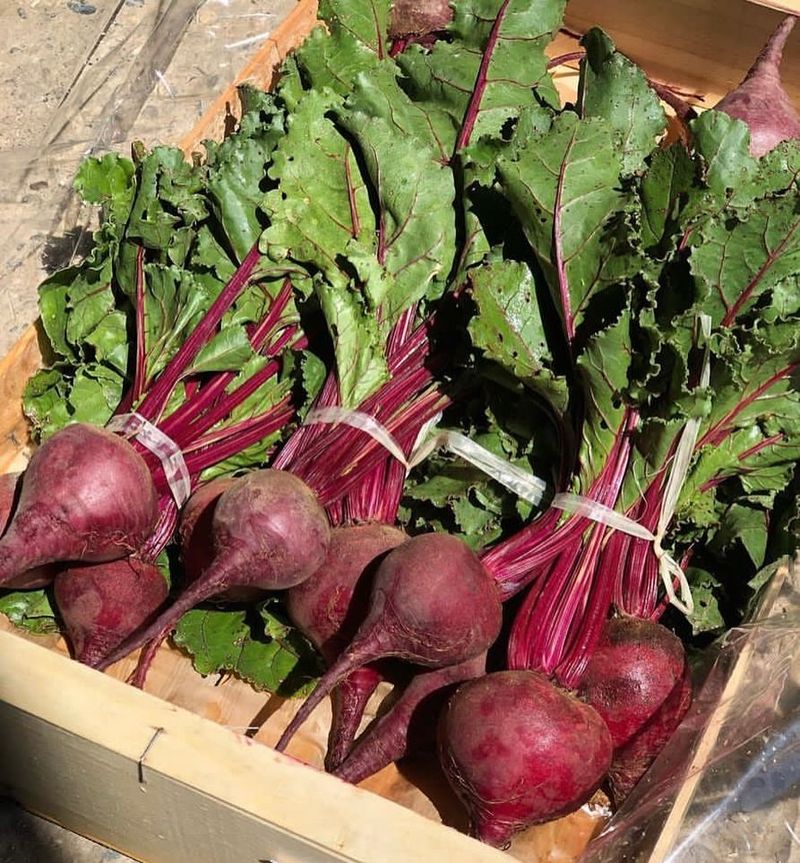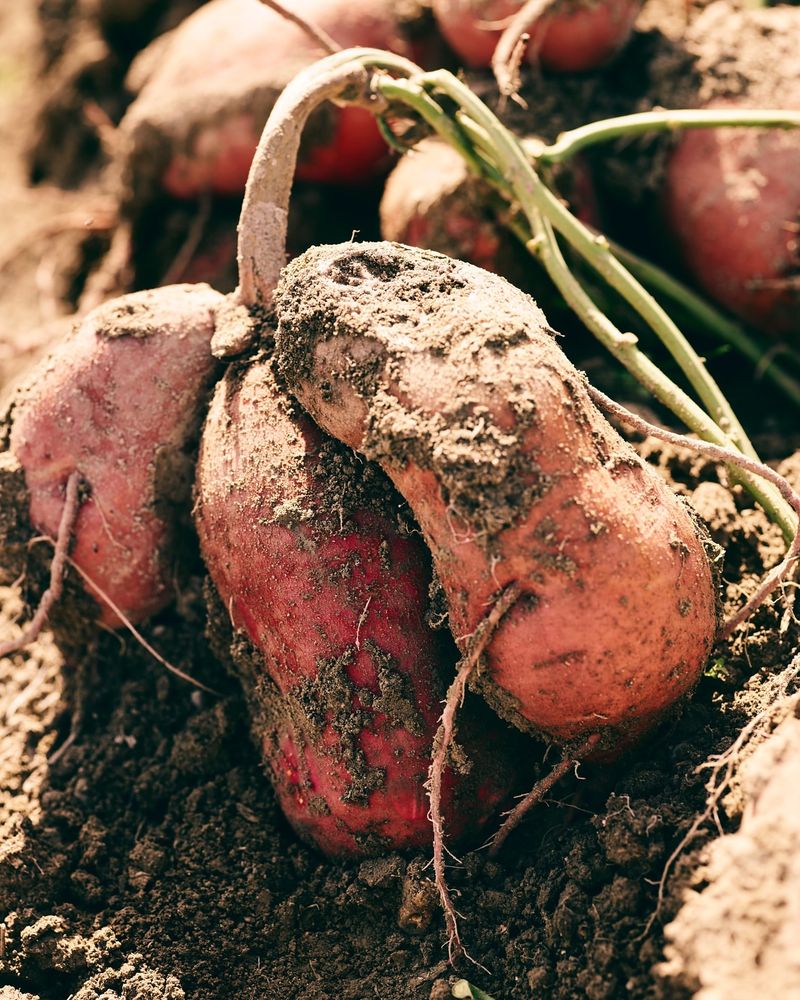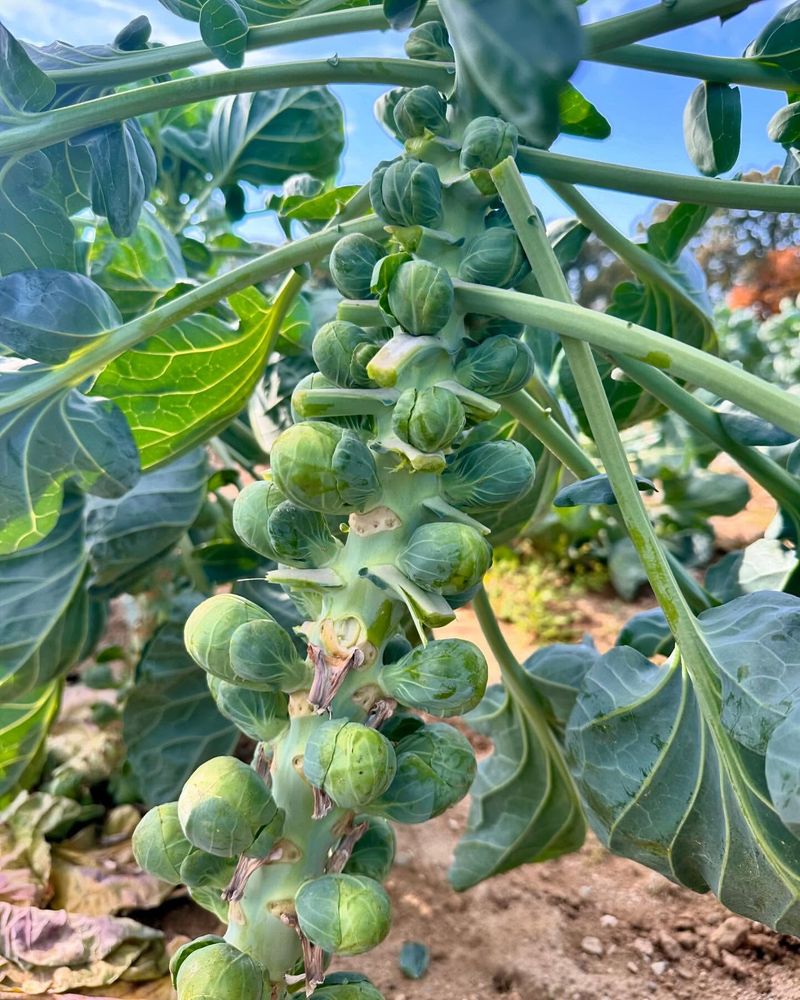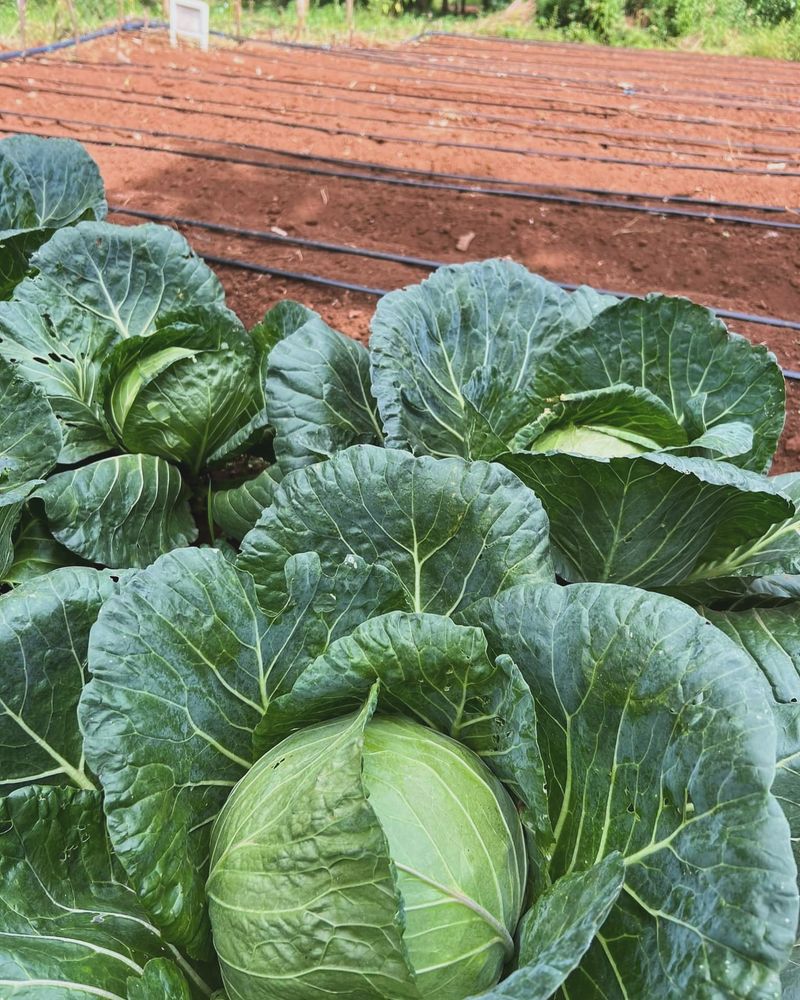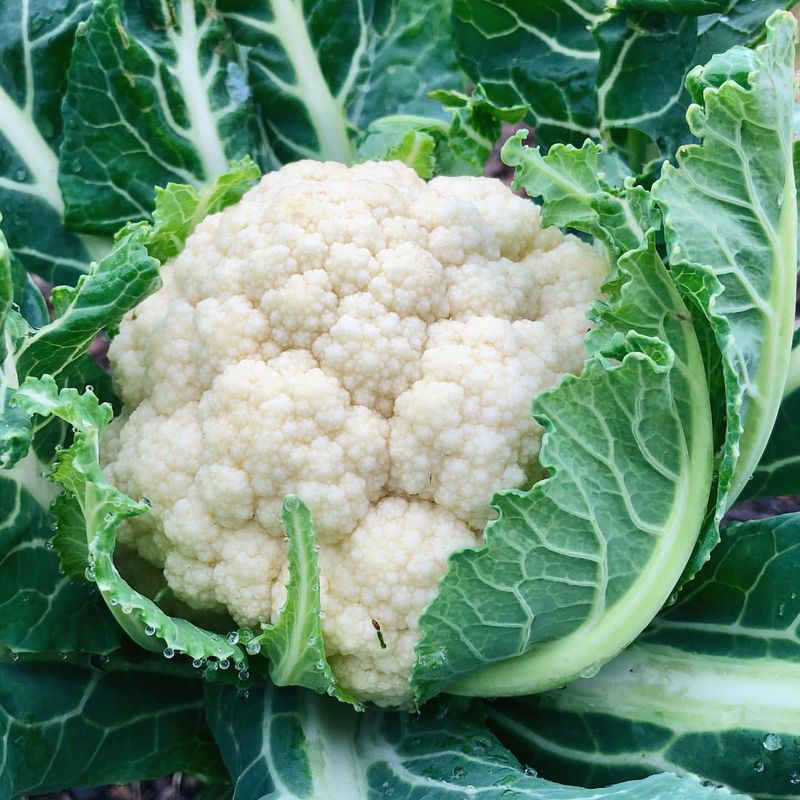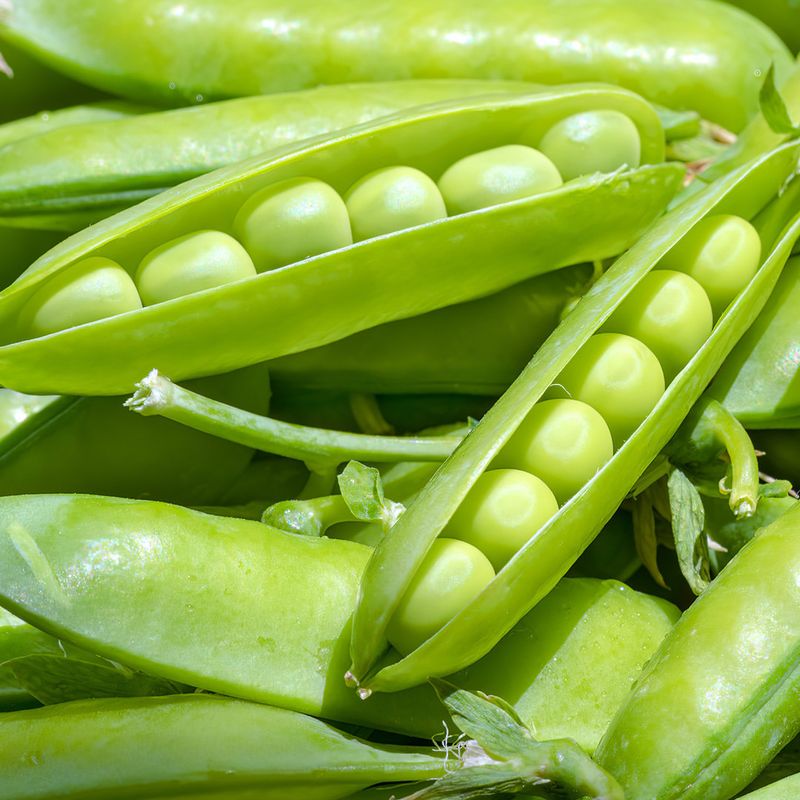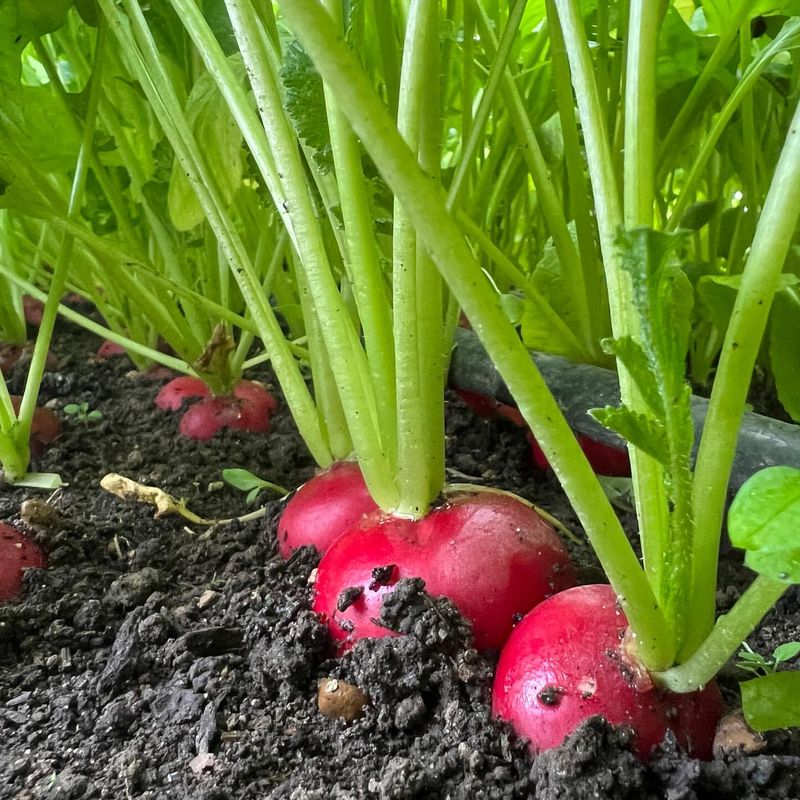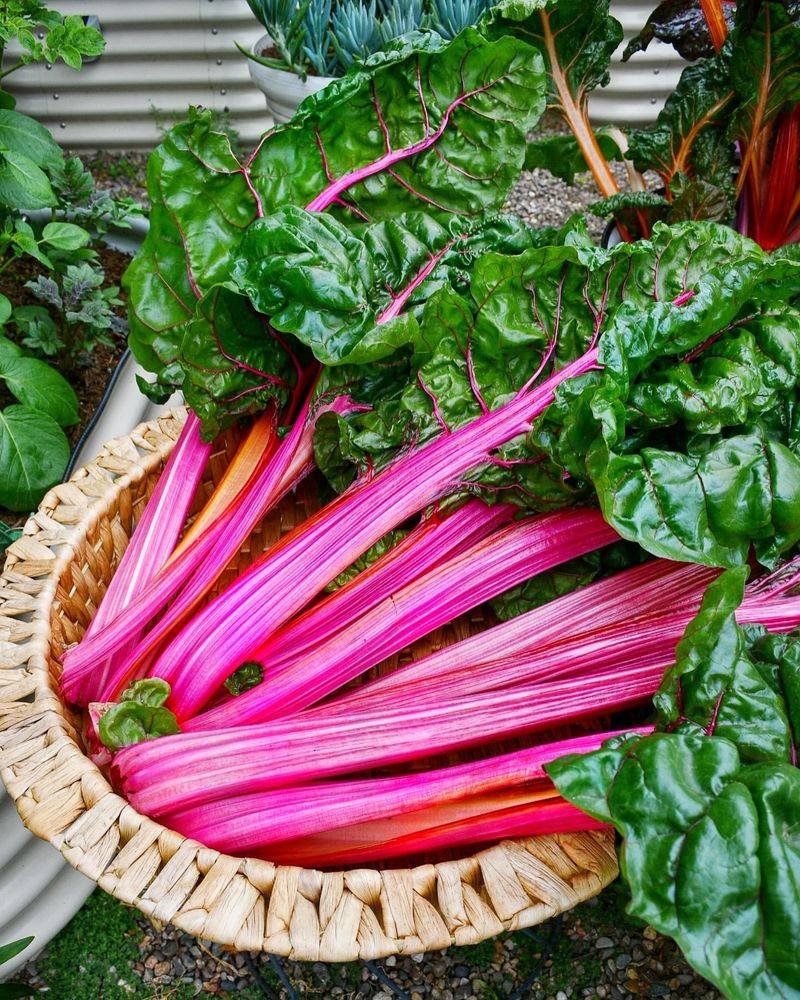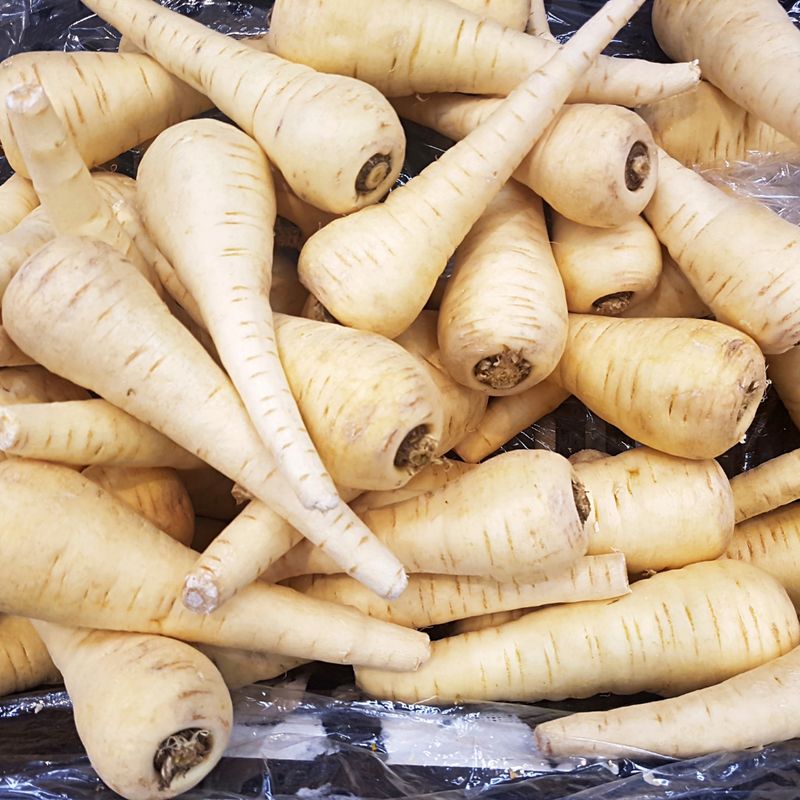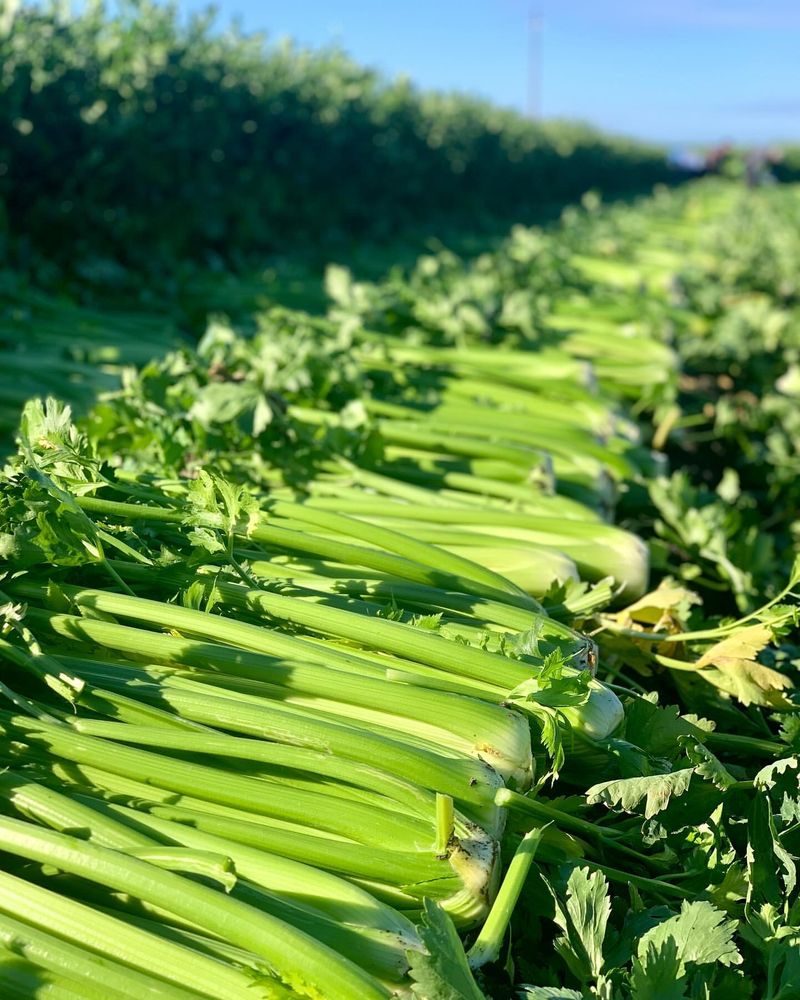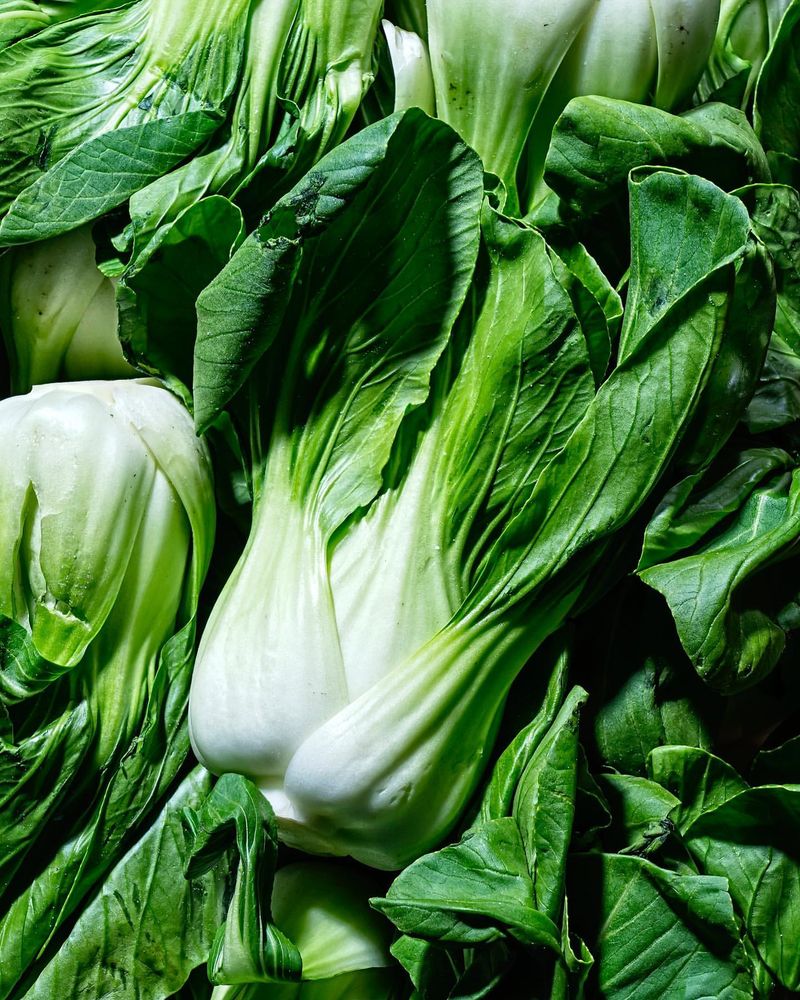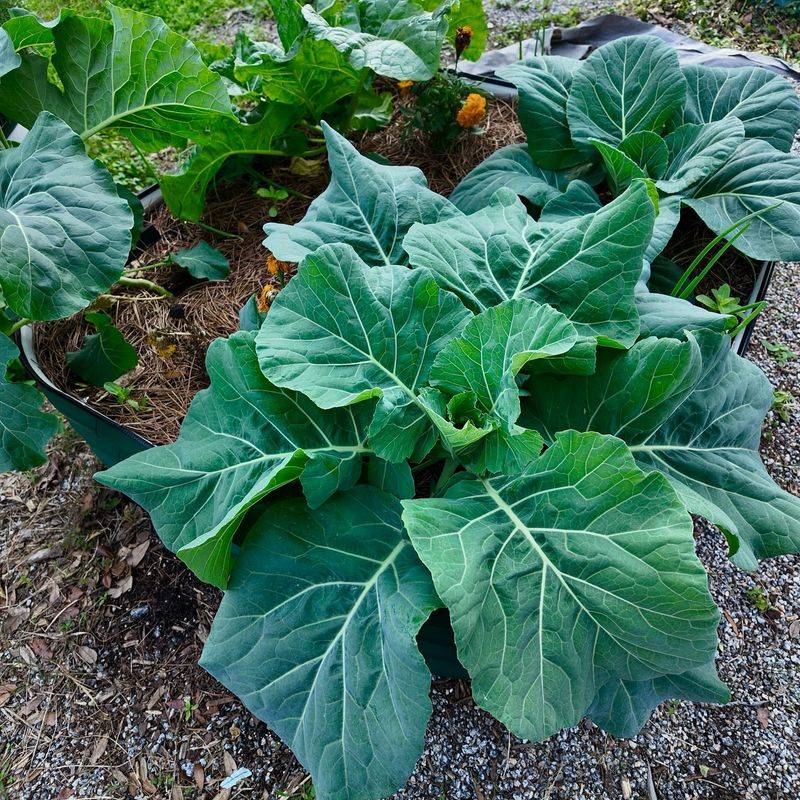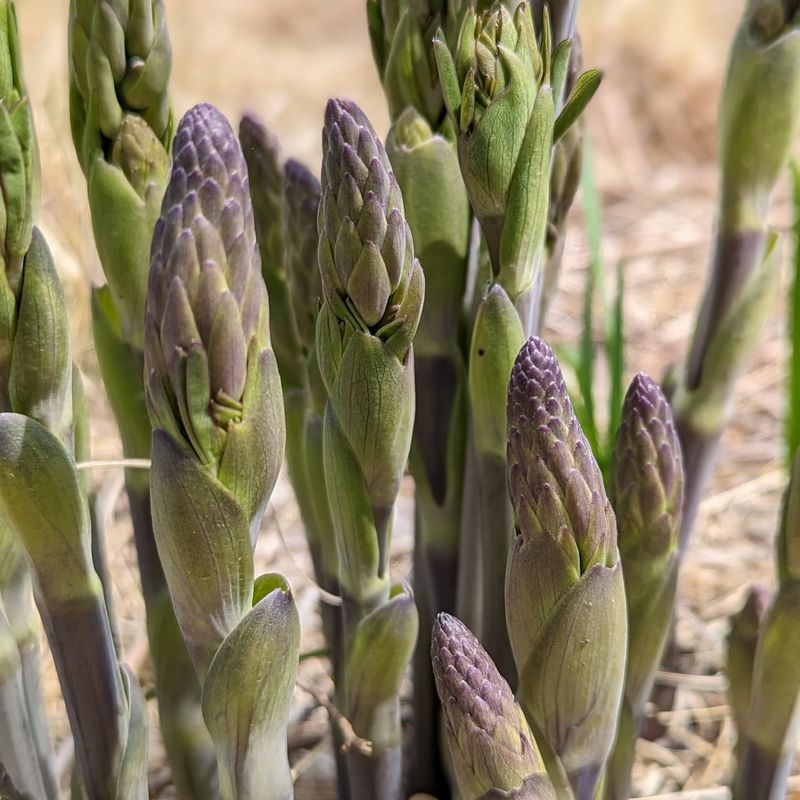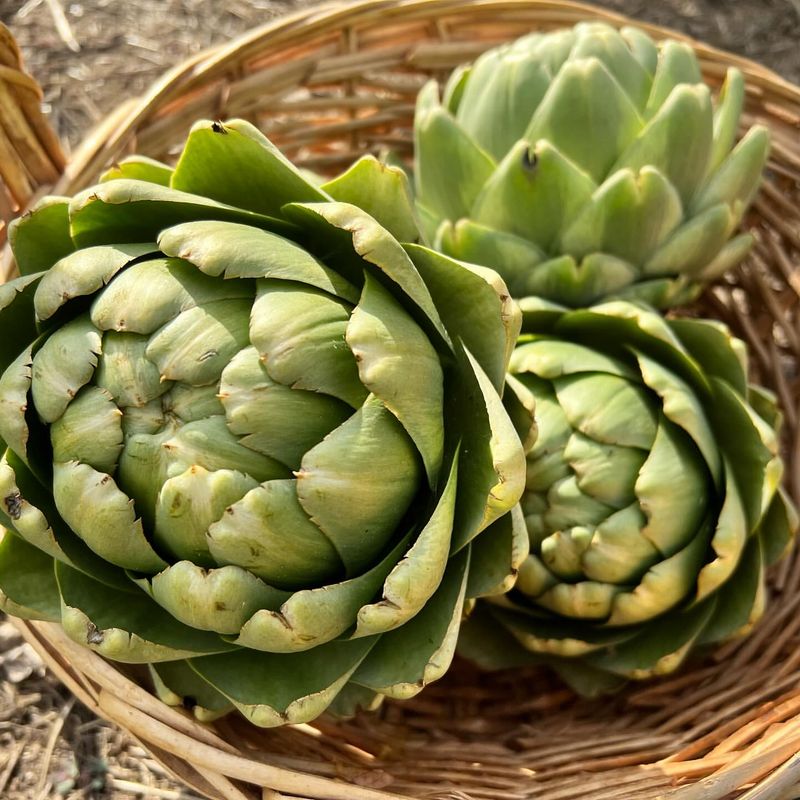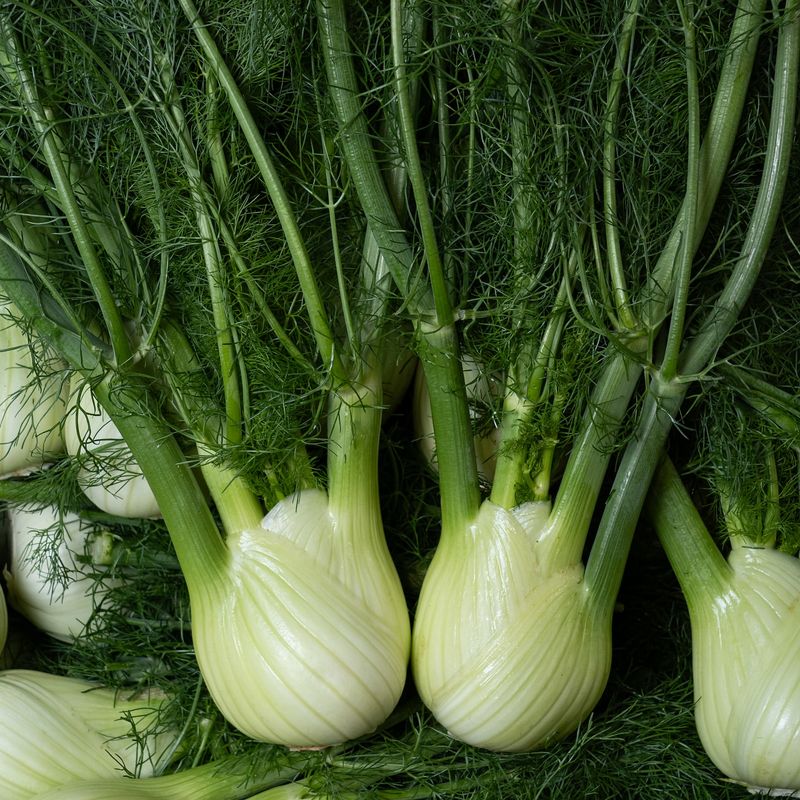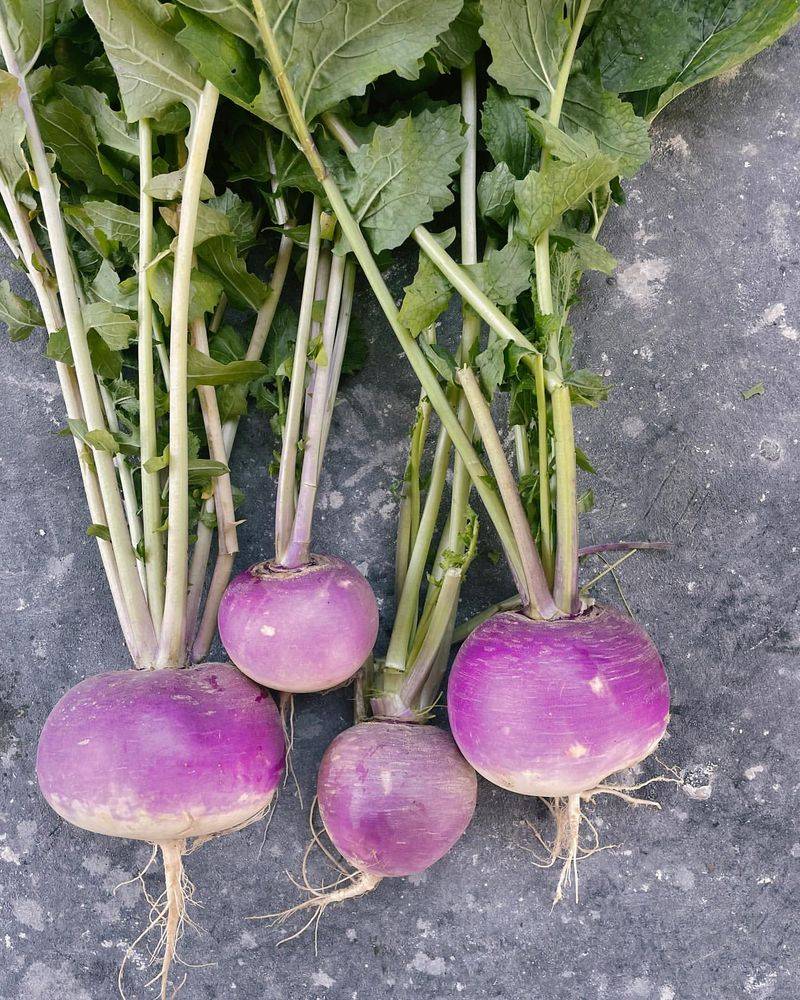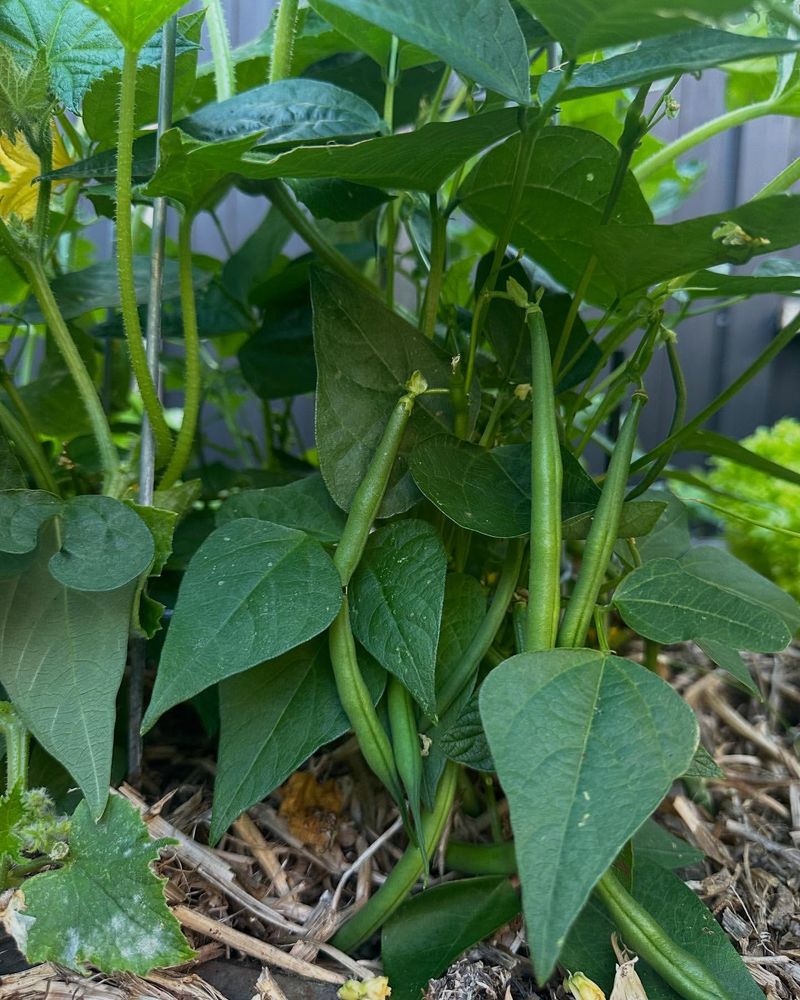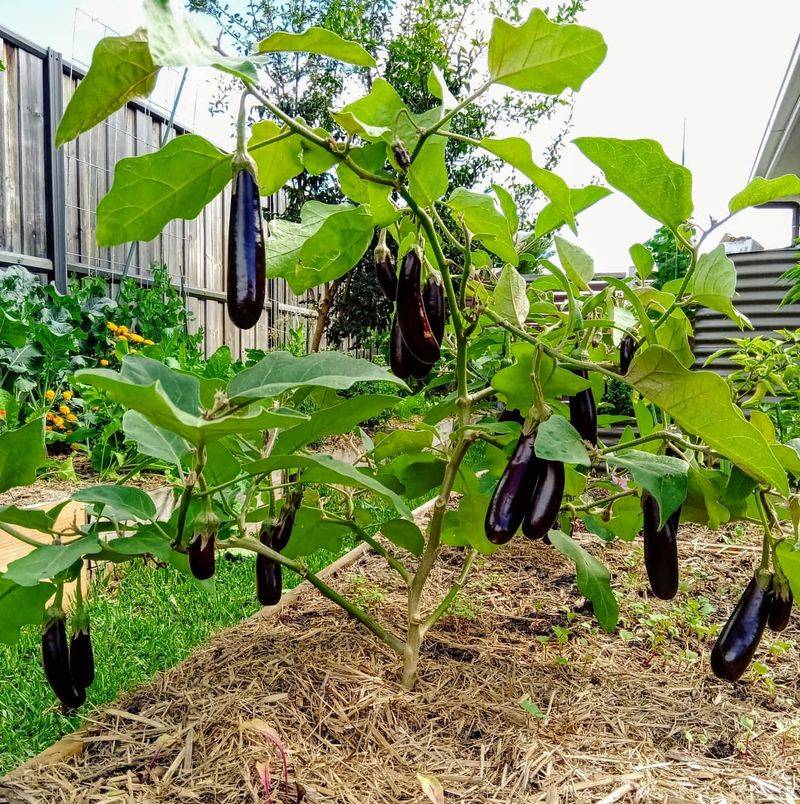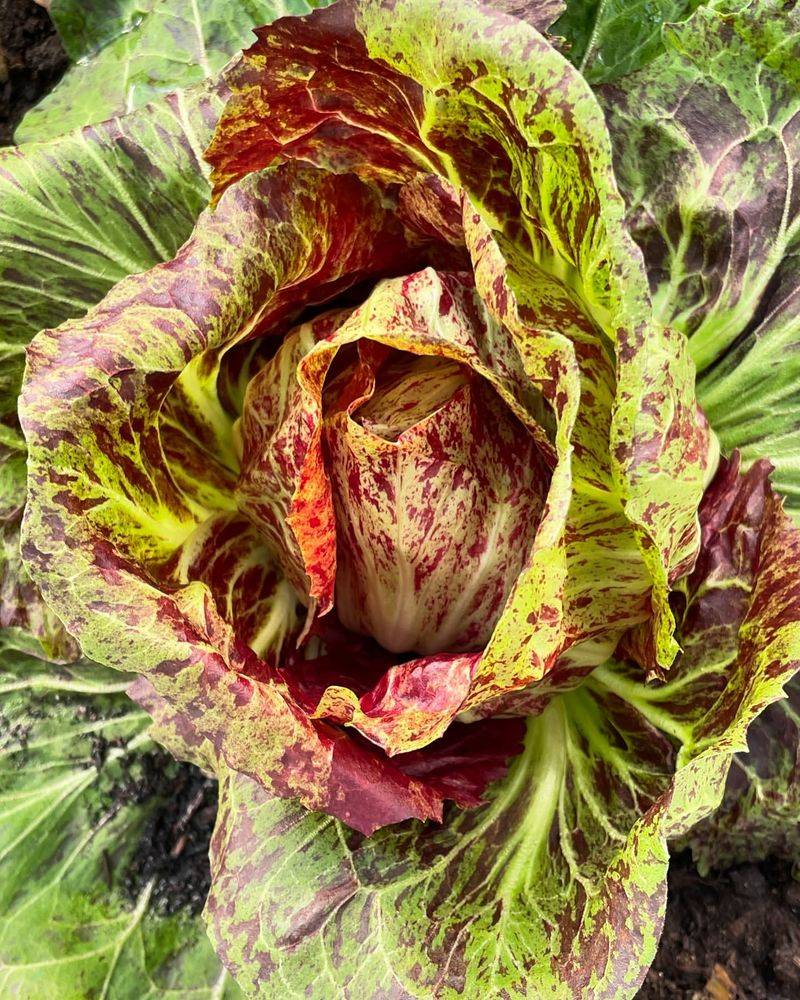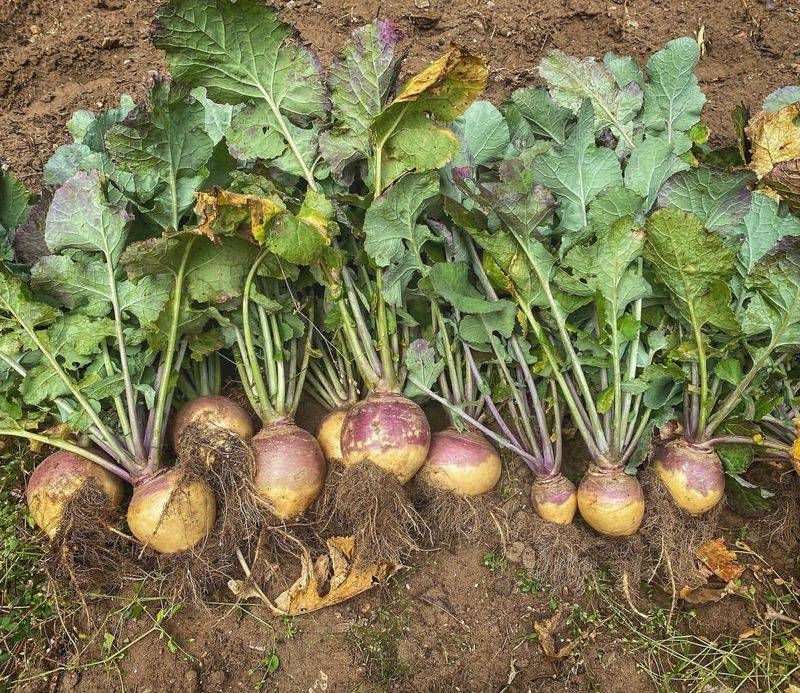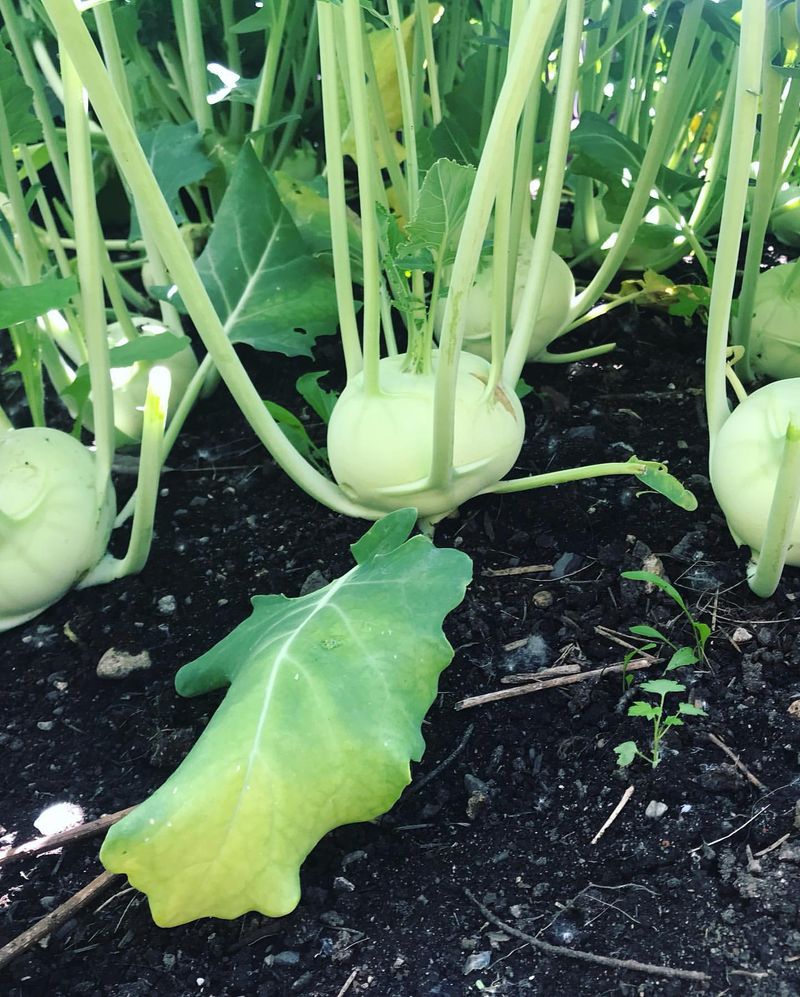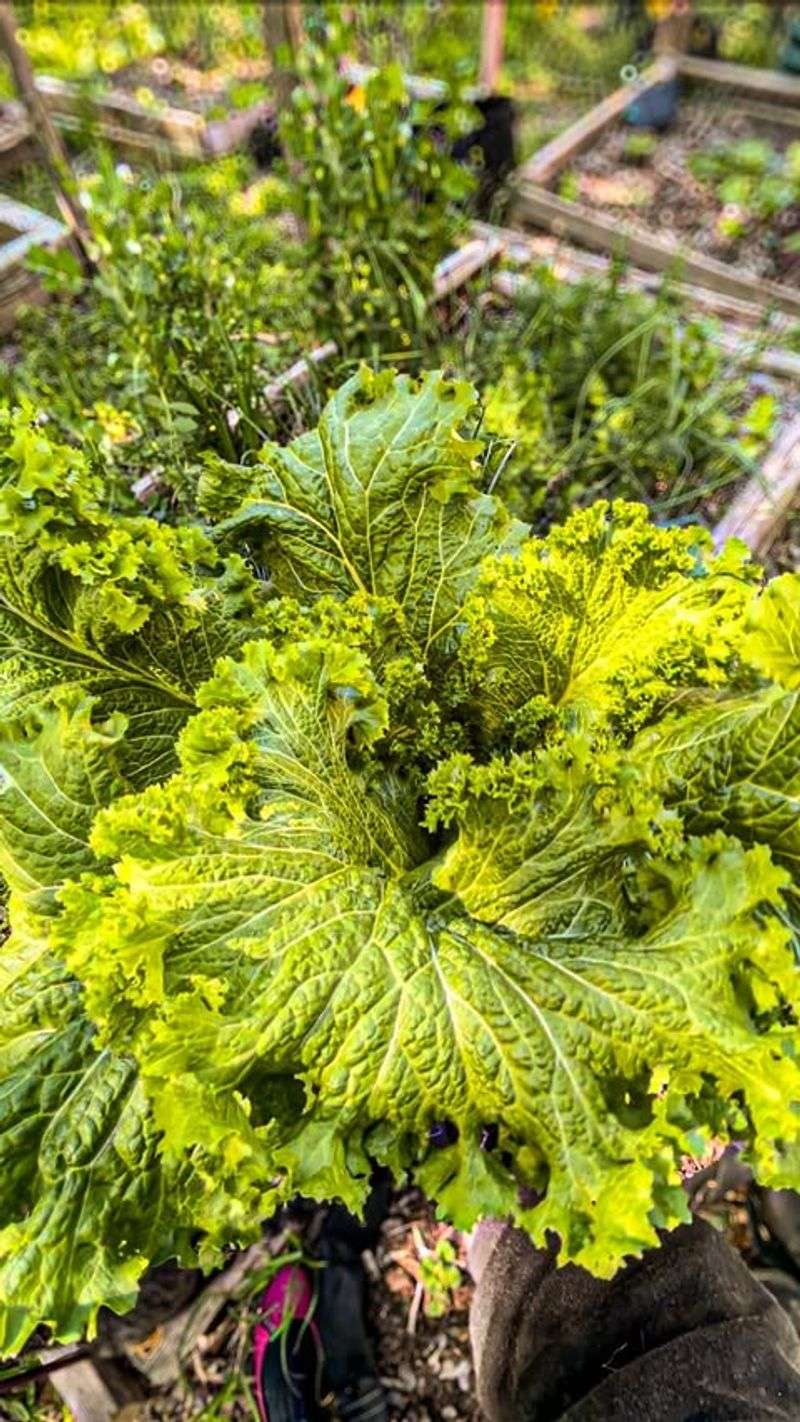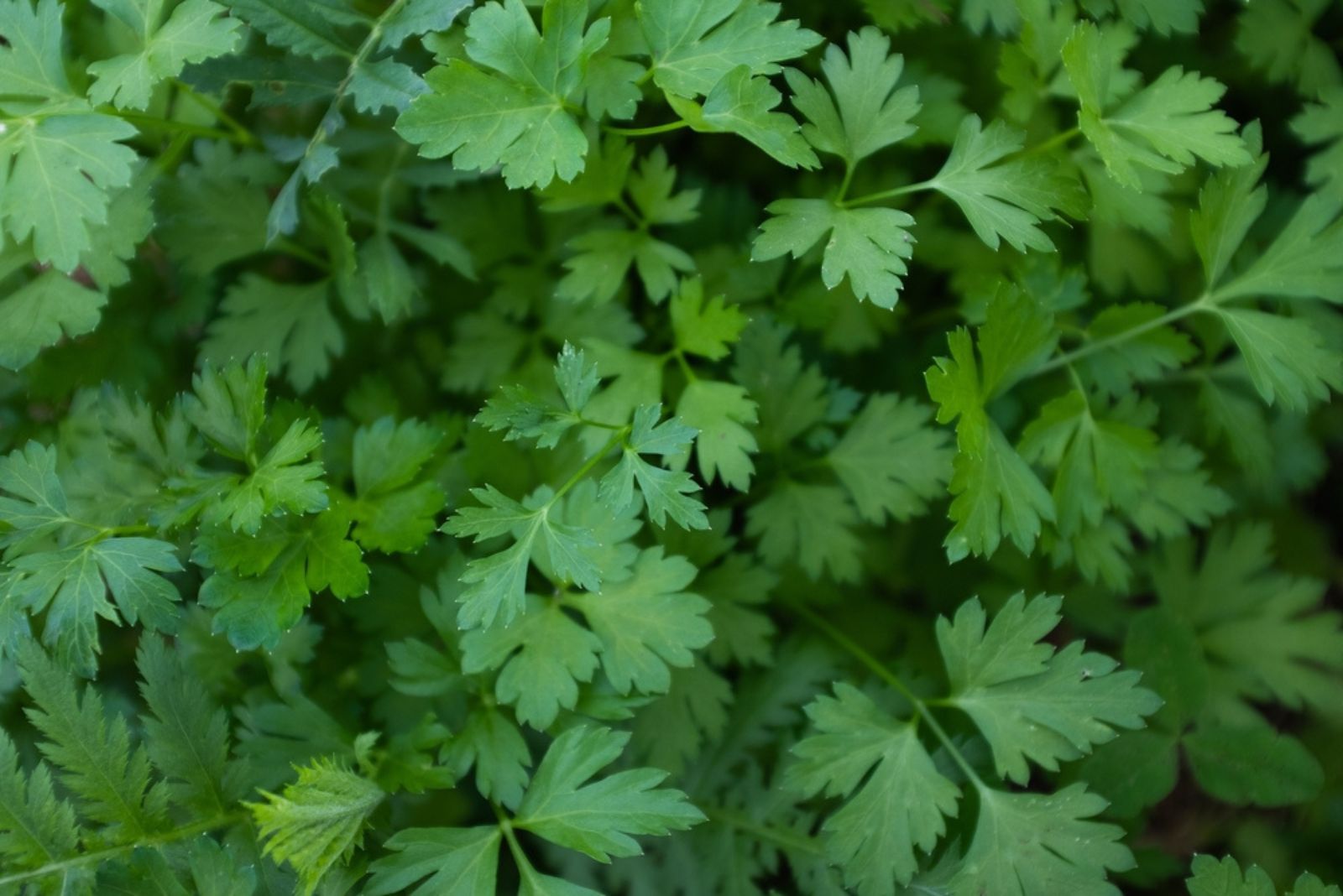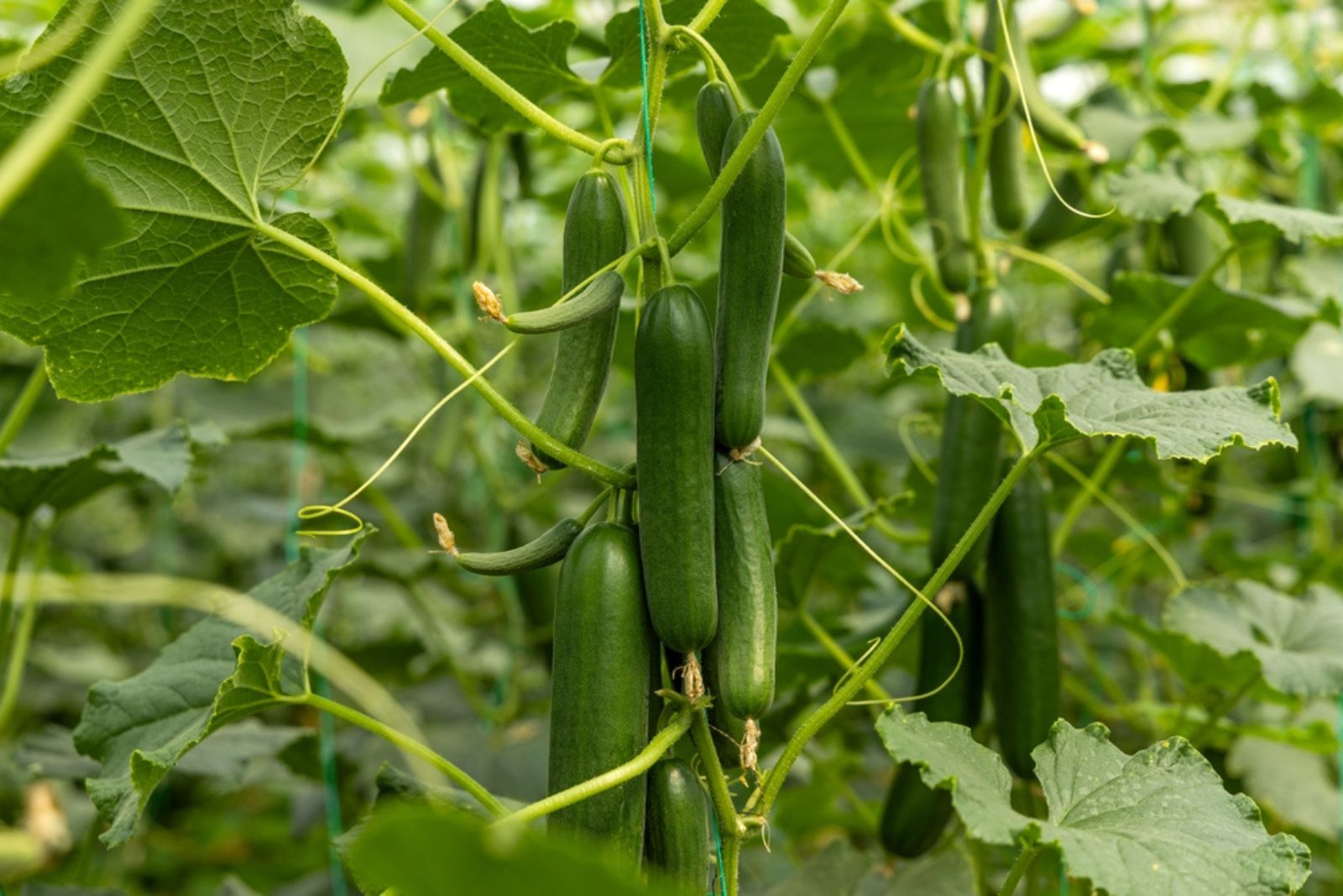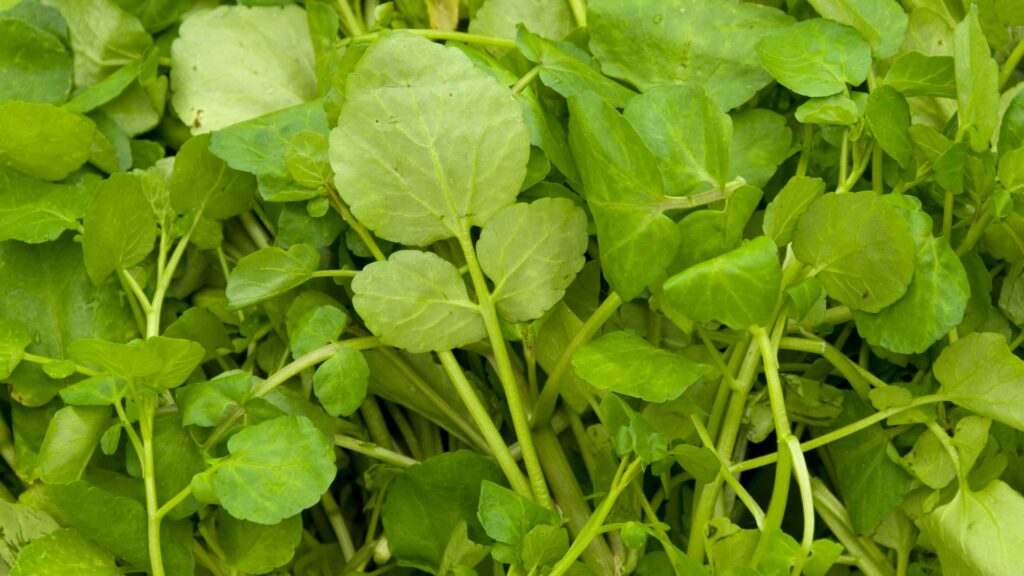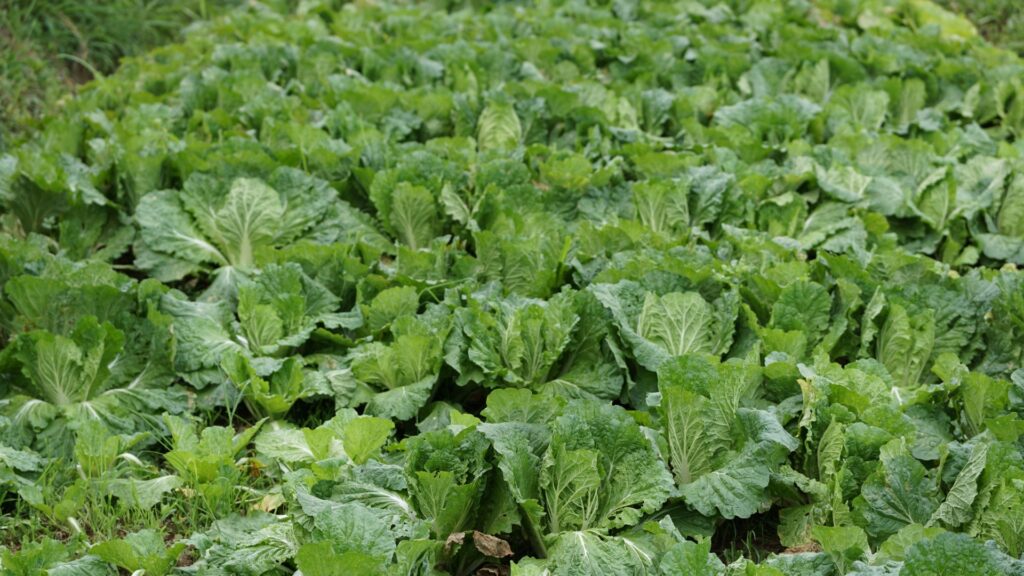Growing your own vegetables isn’t just playing in the dirt—it’s planting the roots of lasting health and vitality. While some veggies may seem unremarkable at first glance, they’re actually bursting with hidden goodness that earns them a rightful place in the superfood spotlight.
So roll up your sleeves and dig in—these 34 “average” vegetables punch well above their weight. They might fly under the radar in the grocery aisle, but in the garden, they’re the real MVPs you’ll want growing front and center.
1. Kale
While not often appreciated at first glance, this leafy green is a nutritional powerhouse. Kale is known for its high content of vitamins A, C, and K. Furthermore, it is rich in antioxidants, which play a crucial role in combating oxidative stress. Adding kale to your meals can support heart health and improve digestion due to its fiber content.
Consider massaging it with olive oil to soften its texture. This makes it a delightful addition to salads or smoothies, where its nutrients can shine. Enjoy experimenting with kale’s versatility in your kitchen.
2. Spinach
This vibrant green is often underestimated, but it offers an incredible amount of nutrients. Spinach is a rich source of iron and calcium, essential for maintaining strong bones and a healthy blood count. Its versatility makes it ideal for various dishes, whether raw in salads or cooked in stews.
Including spinach in your diet can enhance your overall well-being. Its lutein content supports eye health, while the antioxidants help fend off chronic diseases. Whether blended into a smoothie or sautéed with garlic, spinach adds a nutritious punch to meals.
3. Broccoli
Known for its tree-like structure, this vegetable holds an abundance of nutrients. Broccoli is packed with vitamins C and K, contributing to immune support and bone health. Moreover, it contains sulforaphane, a compound studied for its potential cancer-fighting properties.
Adding broccoli to your diet can be a delightful endeavor due to its versatile nature. Steam it lightly to retain its crisp texture and nutritional value. A sprinkle of lemon juice can enhance its flavor, making it a tasty side dish or a main component of stir-fries.
4. Carrots
These orange roots are more than just a crunchy snack. Carrots are remarkably high in beta-carotene, which the body converts into vitamin A, essential for vision and immune function. Their natural sweetness makes them a favorite among kids and adults alike. Include them in your diet raw, roasted, or even juiced.
The fiber content in carrots aids digestion, while their antioxidants support heart health. Whether dunked in hummus or blended into a soup, carrots bring both flavor and nutrition to the table.
5. Beetroot
This root vegetable adds vibrant color and earthy sweetness to dishes. Beetroot is an excellent source of folate, manganese, and nitrates, beneficial for blood pressure regulation. Its unique phytonutrients, known as betalains, have anti-inflammatory properties. Roasting beetroots intensifies their sweetness, making them a delicious addition to salads or side dishes.
Consuming beetroot may also enhance athletic performance due to improved oxygen flow. Incorporate beetroot into your meals for both its distinct flavor and nutritional benefits. Experiment with raw beetroot in smoothies for a nutrient boost.
6. Sweet Potatoes
Not just a fall favorite, this tuber is rich in flavor and nutrients. Sweet potatoes are loaded with beta-carotene, crucial for healthy eyesight and skin. They also provide a hearty dose of fiber, supporting digestive health. The complex carbohydrates in sweet potatoes offer sustained energy, making them ideal for active lifestyles.
Bake or roast them to bring out their natural sweetness and creamy texture. Sweet potatoes are incredibly versatile and can be used in everything from fries to pies, providing warmth and nutrition to any meal.
7. Brussels Sprouts
These small, cabbage-like veggies are nutrient-dense and full of flavor. Brussels sprouts are packed with vitamin C and fiber, which help boost immunity and improve digestive health. Their unique bitter taste can be mellowed by roasting, which also enhances their natural sweetness.
A sprinkle of balsamic vinegar or a touch of honey can further enhance their appeal. Enjoy them as a side dish or toss them in salads for added crunch. Embrace the benefits of Brussels sprouts as you incorporate them into your diet.
8. Cabbage
Often overlooked, this leafy vegetable is brimming with nutrients. Cabbage is an excellent source of vitamin C and K, essential for immune function and bone health. Its high fiber content aids digestion and promotes a healthy gut. Raw, it adds a crisp texture to salads, while cooked cabbage becomes soft and sweet.
Fermenting cabbage into sauerkraut enhances its probiotic benefits, supporting gut health. Whether you enjoy cabbage in a slaw or a stir-fry, its versatility and health benefits are undeniable. Explore creative ways to incorporate cabbage into your meals.
9. Cauliflower
This cruciferous vegetable is a brilliant addition to any garden. Cauliflower is low in calories yet high in vitamins C and K. It’s an excellent source of fiber, supporting digestive health and satiety. Its versatility allows it to replace higher-calorie foods. Try it roasted as a side dish, or blend it into soups for a creamy texture without dairy.
The phytonutrients in cauliflower have antioxidant properties, contributing to overall health. Enjoy its nutty flavor and satisfying crunch in various culinary delights. Cauliflower easily adapts to your cooking style.
10. Peas
These small, round vegetables are packed with substantial nutrition. Peas are an excellent source of plant-based protein and fiber, supporting muscle health and digestion. Their sweet, delicate flavor is perfect in a variety of dishes. Include them in soups, stews, or as a vibrant addition to salads.
The vitamin K in peas is vital for bone health, while their antioxidants can help reduce inflammation. Fresh or frozen, peas retain their nutritional benefits. Enjoy them as a wholesome side or a delicious main ingredient in your culinary creations.
11. Zucchini
This summer squash offers more than meets the eye. Zucchini is low in calories and high in antioxidants, supporting overall health. Its mild taste and soft texture make it adaptable in numerous recipes. Slice raw zucchini into salads for a refreshing crunch, or grill it for a smoky flavor.
It’s also a great substitute for pasta when spiralized. The fiber in zucchini aids digestion, while its vitamins boost immune function. Whether you enjoy it baked, grilled, or raw, zucchini adds both nutrition and versatility to your meals.
12. Radishes
These peppery roots add a delightful crunch to dishes. Radishes are rich in vitamin C, which aids in collagen production and immune function. Their vibrant color and spicy flavor make them a great addition to salads and sandwiches. Radishes are also known for their detoxifying properties, supporting liver health.
Enjoy them raw for maximum crunch, or roast them to mellow their flavor and bring out their sweetness. Including radishes in your diet can enhance your meals with both texture and nutritional value. Try them pickled for a tangy treat.
13. Swiss Chard
This leafy green is often overshadowed by more popular greens but is equally nutritious. Swiss chard contains an impressive amount of vitamins A, C, and K, which support vision, immune function, and bone health. Its earthy taste pairs well with garlic and lemon, making it a flavorful side dish.
Sauté Swiss chard for a nutrient-rich addition to meals. The magnesium content in Swiss chard supports muscle and nerve function. Whether you enjoy it raw or cooked, Swiss chard brings both vibrant color and nutrition to your table.
14. Leeks
These allium vegetables boast a subtle, sweet flavor that enhances many dishes. Leeks are rich in flavonoids and sulfur compounds, supporting heart health and reducing inflammation. Their high fiber content aids digestion, making them a great addition to soups and stews.
Sautéing leeks brings out their natural sweetness and softens their texture, providing an excellent base for many recipes. Incorporate leeks into your diet for a delicious way to enjoy their numerous health benefits. They can be a flavorful addition to quiches, tarts, or salads.
15. Parsnips
These root vegetables offer a sweet, nutty flavor that rivals carrots. Parsnips are a good source of vitamins C, K, and folate, promoting immune health and cellular function. Their high fiber content aids digestion and contributes to a feeling of fullness.
Roasting parsnips enhances their natural sweetness, making them a delicious side dish. They can also be mashed as a lower-carb alternative to potatoes. Including parsnips in your meals adds both flavor and nutrition. Enjoy them in soups, stews, or baked as fries for a delightful treat.
16. Celery
Often seen as a snack, this crunchy vegetable is more than just a diet staple. Celery is low in calories but rich in vitamins K and C. Its high water content makes it hydrating and refreshing. Celery’s antioxidants contribute to reducing inflammation and supporting overall health.
Enjoy it as a crunchy snack with your favorite dip, or add it to soups and stews for depth of flavor. The fiber in celery supports digestion, while its mild taste complements various dishes. Incorporate celery into your meals for both nutrition and texture.
17. Bok Choy
This Chinese cabbage is a staple in Asian cuisine, offering numerous health benefits. Bok choy is rich in vitamins A, C, and K, supporting vision, immune function, and bone health. Its mild flavor pairs well with garlic and ginger, making it a versatile ingredient in stir-fries and soups.
The calcium content in bok choy supports bone strength. Whether steamed, sautéed, or added to broths, bok choy enhances meals with its crunchy texture and nutritional value. Including bok choy in your diet can be both tasty and healthful.
18. Collard Greens
These leafy greens offer a wealth of nutrients and are particularly popular in Southern cuisine. Collard greens are an excellent source of vitamins A, C, and K, along with calcium and iron. Their robust texture holds up well in slow-cooked dishes, where they absorb flavors beautifully.
The fiber in collard greens aids digestion and supports heart health. Sauté them with onions and garlic for a nutritious side dish. Their slightly bitter taste complements savory dishes. Including collard greens in your meals brings both nutrition and flavor to the table.
19. Asparagus
This spring vegetable is celebrated for its delicate flavor and nutritional benefits. Asparagus is low in calories but high in vitamins A, C, and K. It’s a good source of folate, essential for cell function and tissue growth. The antioxidants in asparagus help combat inflammation and support overall health.
Grill or steam asparagus for a simple yet elegant side dish. Its tender stalks add a burst of flavor to salads and pastas. Including asparagus in your diet provides a delicious way to enjoy its numerous health benefits.
20. Artichokes
This thistle vegetable stands out with its unique appearance and nutritional profile. Artichokes are rich in fiber, supporting digestive health and keeping you full. They also provide a good amount of vitamins C and K, essential for immunity and bone health.
Their antioxidants, particularly cynarin, promote liver health and aid in detoxification. Enjoy artichokes steamed, grilled, or marinated for a flavorful experience. The soft heart and tender leaves make artichokes a delightful addition to various dishes. Explore creative ways to prepare and enjoy this nutrient-rich vegetable.
21. Fennel
This aromatic vegetable offers a sweet, licorice-like flavor that enhances many dishes. Fennel is rich in vitamin C, supporting immune health and collagen production. Its fiber content aids digestion and can help regulate appetite. Fennel’s phytonutrients have anti-inflammatory properties, contributing to overall well-being.
Enjoy fennel raw in salads for a refreshing crunch, or roast it to bring out its natural sweetness. The fronds can be used as an herb, adding flavor to soups and stews. Including fennel in your meals provides both culinary versatility and nutritional benefits.
22. Turnips
These root vegetables offer a unique combination of flavors. Turnips are low in calories but high in nutrients, including vitamin C and fiber. Their antioxidants support immune health and help reduce inflammation. Turnips can be enjoyed raw in salads for a crunchy texture or cooked in stews for a heartier meal.
Roasting turnips brings out their natural sweetness, making them a satisfying side dish. Including turnips in your diet offers both nutritional benefits and culinary variety. Experiment with different preparations to enjoy their mild, earthy taste.
23. Green Beans
These slender pods pack a punch when it comes to nutrition. Green beans are low in calories but high in vitamins A, C, and K. Their fiber content supports digestive health, while their antioxidants help reduce inflammation. Enjoy green beans steamed, sautéed, or in a fresh salad.
They add a delightful crunch and vibrant color to any meal. Including green beans in your diet provides a nutritious and versatile option. Whether as a side dish or a main ingredient, green beans enhance your meals with both flavor and nutrition.
24. Eggplant
This versatile nightshade is celebrated for its rich, meaty texture. Eggplant is low in calories and high in fiber, promoting satiety and digestive health. Its antioxidants, particularly nasunin, support brain health and protect cells from damage. Grill or roast eggplant for a smoky flavor, or incorporate it into stews for added depth.
Eggplant’s ability to absorb flavors makes it a popular ingredient in various cuisines. Including eggplant in your diet offers both culinary flexibility and nutritional benefits. Enjoy experimenting with this unique vegetable in your cooking.
25. Pumpkin
This autumn favorite is not just for Halloween decorations. Pumpkin is rich in beta-carotene, which supports vision and immune health. Its fiber content promotes digestive health and helps regulate appetite. Enjoy pumpkin roasted, pureed in soups, or baked into pies for a comforting treat.
The seeds are also edible, providing healthy fats and protein. Including pumpkin in your diet offers both nutritional benefits and culinary enjoyment. Whether in savory dishes or sweet desserts, pumpkin adds a touch of warmth and nutrition to your meals.
26. Radicchio
This bitter leafy vegetable brings bold colors and flavors to the table. Radicchio is rich in vitamin K and antioxidants, supporting bone health and reducing inflammation. Its distinct taste pairs well with sweet and savory ingredients, making it a versatile addition to salads and dishes.
Grilling radicchio softens its bitterness and enhances its sweetness. Including radicchio in your diet adds both vibrant color and nutrition. Explore its culinary potential by combining it with fruits, nuts, and cheeses for a balanced and flavorful meal.
27. Rutabaga
This root vegetable offers a sweet, nutty flavor that enhances many dishes. Rutabaga is rich in vitamin C, supporting immune health, and fiber, aiding digestion. Its antioxidants help combat inflammation and support overall health. Enjoy rutabaga roasted, or mashed as a nutritious alternative to potatoes.
Including rutabaga in your diet provides a delicious way to enjoy its health benefits. Its versatility makes it a great addition to soups and stews. Experiment with adding rutabaga to your meals for both flavor and nutrition.
28. Kohlrabi
This alien-looking vegetable is surprisingly versatile. Kohlrabi is rich in vitamin C and fiber, supporting immune health and digestion. Its crisp texture and mild taste make it a delightful addition to salads and slaws. Enjoy kohlrabi raw for a crunchy snack, or cook it for a tender side dish.
The antioxidants in kohlrabi help protect cells from damage. Including kohlrabi in your diet provides both flavor and nutrition. Explore its culinary versatility by incorporating it into various dishes. Whether raw or cooked, kohlrabi is a nutrient-rich option.
29. Mustard Greens
These spicy greens pack a nutritional punch. Mustard greens are high in vitamins A, C, and K, supporting vision, immune function, and bone health. Their peppery flavor adds zest to salads and sautés. The antioxidants in mustard greens help reduce inflammation and support overall health.
Sauté them with garlic and olive oil for a simple yet delicious side dish. Including mustard greens in your diet can enhance your meals with both flavor and nutrition. Enjoy them raw or cooked for a nutrient-dense addition to your dishes.
30. Parsley
Usually treated like a decorative garnish, parsley is wildly underrated when it comes to nutrition. This leafy herb is bursting with vitamin K (one tablespoon gives you over half your daily needs), along with vitamin C, folate, and iron.
It also contains powerful antioxidants like apigenin and luteolin, which support healthy aging and immune function. Parsley is easy to grow from seed and thrives in containers or garden beds. Snip it fresh to brighten dishes—or enjoy it in bunches for a serious nutrient boost. It’s not just a sidekick; it’s a superfood in disguise.
31. Cucumber
Often seen as just a crisp salad filler, cucumber is actually a hydrating powerhouse with real superfood status. It’s packed with water, making it excellent for skin health and staying refreshed in hot weather, but it also contains antioxidants like cucurbitacins and flavonoids that support overall wellness.
Plus, cucumbers contain a decent dose of vitamin K and potassium—two key nutrients for bone health and heart function. Easy to grow in containers or garden beds, cucumbers are perfect for small spaces and summer harvests. They’re more than just cool—they’re low-key nutrient heroes.
32. Okra
Often overlooked, this podded vegetable is a hidden gem in the nutrition world. Okra is rich in vitamins C and K, supporting immune function and bone health. Its mucilaginous texture, while unique, contains soluble fiber that promotes digestive health and helps regulate blood sugar levels.
Enjoy okra roasted or sautéed for a crispy, flavorful side dish. When added to soups and stews, it acts as a natural thickener, especially in dishes like gumbo. Including okra in your garden gives you a nutrient-dense, heat-tolerant crop that’s both versatile and delicious.
33. Watercress
This peppery green may be small in size but it’s mighty in nutrients. Watercress is packed with vitamins A, C, and K, and is ranked among the most nutrient-dense vegetables available. It contains powerful antioxidants that support cellular health and reduce oxidative stress.
Enjoy watercress fresh in salads or as a garnish to add a spicy kick. Its delicate leaves and stems also work beautifully in sandwiches or stirred into soups just before serving. Growing watercress is surprisingly simple in damp soil or containers, making it a superfood that’s as easy to cultivate as it is to enjoy.
34. Napa Cabbage
This Asian variety of cabbage is both tender and nutrient-rich. Napa cabbage is loaded with vitamins C and K, supporting immune health and bone strength. It also provides folate and fiber, which aid in digestion and cellular repair. Its mild, slightly sweet flavor makes it a favorite for both raw and cooked dishes.
Use it fresh in slaws or salads for a satisfying crunch, or incorporate it into stir-fries and soups where it softens beautifully while soaking up flavors. Napa cabbage is also a key ingredient in kimchi, which adds probiotic benefits. Easy to grow and versatile in the kitchen, this leafy green is a quiet superfood hero.

